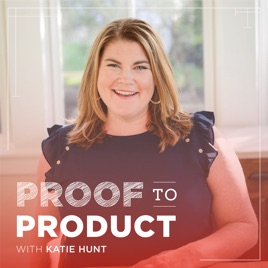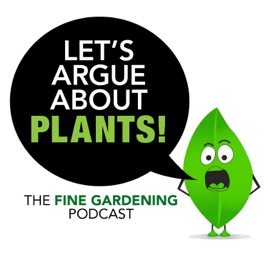
Advertise on podcast: Haptic & Hue
Rating
4.8 from
Country
This podcast has
48 episodes
Language
Publisher
Explicit
No
Date created
2020/09/03
Average duration
41 min.
Release period
36 days
Description
Haptic & Hue's Tales of Textiles explores the way in which cloth speaks to us and the impact it has on our lives. It looks at how fabric traditions have grown up and the innovations that underpin its creation. It thinks about the skills that go into constructing it and what it means to the people who use it. It looks at the different light textiles cast on the story of humanity.
Social media
Check Haptic & Hue social media presence
Podcast episodes
Check latest episodes from Haptic & Hue podcast
The Garment That Sweeps Through History: The Everlasting Cloak
2024/02/01
There’s a piece of clothing that has a good claim to being a universal garment. It is thousands of years old and yet it featured on the catwalks last year. It’s stylish and at the same time the humblest and simplest of garments. It has been worn and enjoyed by rich and poor alike. It has been repurposed and reshaped throughout human history and it has fulfilled many functions.
The cloak has kept us good company throughout the centuries, it has marched with armies across plains and deserts, it has been sanctified and worn by saints, and was just as beloved by sinners such as highwaymen. It became the emblem of witches on broomsticks and superheroes flying through the sky. It was worn by hobbits to make them invisible and it is still revered as the ultimate in stylish outerwear by Venetians.
This episode of Haptic & Hue looks at the cloak, cape, cope, mantle, and all its other many forms through history and tries to answer the question of why it has proved such a joyful, useful and versatile garment.
For more information, a full transcript and further links, see https://hapticandhue.com/tales-of-textiles-series-6/
more
Ukraine's Revolutionary Act of Embroidery: How Identity Survives in Stitches
2024/01/04
As the war in the Ukraine brutally shows, few people have had as hard a struggle down the centuries to maintain their identity as Ukrainians. For hundreds of years, they have been occupied and subjugated by one power after another, the Ottomans, the Austro-Hungarian Empire, Russia, Poland, the Nazis, and Russia again. Through it all Ukrainians have held onto their traditions: one of the strongest of these has been the beautifully and skilfully stitched motifs on plain linen or hemp shirts.
The embroidery of Ukraine is one of its secret weapons and an incredible defence against the cultural annihilation that has been practiced against it. What it means to be a Ukrainian is powerfully expressed in the complex and beautifully worked stitches that go into decorating their national dress. The knowledge of what each stitch means and the skill to make these shirts is thriving and continues to be passed down the generations. This episode of Haptic & Hue is about how the beautifully embroidered shirts and blouses of Ukraine have endured as a symbol of the country’s fight for existence and have become so entwined with the identity of Ukrainians that some refer to it as part of their genetic code.
For more information, a full transcript and further links, see https://hapticandhue.com/tales-of-textiles-series-6
more
The Point of The Needle - How the Ancient Craft of Stitching Shapes Us
2023/12/07
The needle and thread have been humanity’s constant companions for tens of thousands of years: far longer than the dog, the sword, or the wheel, and much longer than reading and writing. Down the centuries the needle has rendered us incredible service and we have come to depend on it. And yet the activity of stitching has long been ignored in the record of human endeavour. Even the modern trend for embracing making and craft tends to leave out sewing. But a new book just out, comes to try to redress the balance.
Haptic & Hue’s Book of the Year for 2023 is Barbara Burman’s The Point of The Needle. In it, Barbara says ‘stitching and stitches are valued precisely because they embody human life and invention, and cloth itself is inseparable from them’. Barbara was the co-author of the well-received book called ‘The Pocket – A Secret History of Women’s Lives’, but in this new book, Barbara has a much bigger canvas: to rescue sewing from the twilight and to celebrate it as a fundamental human activity.
For more information, a full transcript, and further links, https://hapticandhue.com/tales-of-textiles-series-5/
more
The Language of Thread - Why Sewing Matters and How It Was Taught
2023/11/02
Sewing is one of the most vital but also one of the most overlooked human crafts. Every piece of clothing we wear has been put together by someone who has learned to sew. Millions of people sew for pleasure and millions more earn their living in the textile and clothing industries – often in underpaid and unprotected jobs.
The craft of using a needle has been one of humanity’s greatest skills, ever since this tiny piece of technology came into use around 60,000 years ago. It is something that unites us all as human beings, regardless of ethnicity, religion or geography. For most of time, sewing as a skill was passed from generation to generation. But, in the last few hundred years, as textiles and thread have been produced in abundance, how we learned to sew became a political matter. Governments, churches, politicians, and corporations all had a view on the morality and the methods necessary to turn out the ideal needlewoman.
This episode of Haptic & Hue tells the little-known story of how two separate sewing schools on different sides of the Atlantic gave women all over the world a new life of economic independence, social status and personal power. One of these education programmes took the Singer sewing machine into every corner of the globe. The other, a ground-breaking teacher training college in London, had an impact on the lives of millions of girls all over the world.
For more information, a full transcript and further links, https://hapticandhue.com/tales-of-textiles-series-5/
more
Cabbage and Mungo: How Recycling Returned To Savile Row
2023/10/05
There is a quiet revolution happening on Savile Row in London, home to some of the world’s finest men’s outfitters, as the makers of bespoke suits embrace textile recycling in a unique new scheme. A number of houses on The Row have been collecting woollen offcuts as they cut and tailor handmade men’s clothing – just as they did in times gone by– and sending them off to be recycled into new yarn, which is then woven into fresh cloth. The radical difference is that this time the recycled cloth is being bought back by these high-end workshops to be tailored and sold to the Row’s own bespoke customers.
Savile Row, in the heart of London, has been at the centre of high-quality men’s tailoring for 200 years. It has supplied handmade suits, from the finest woven cloth, to film stars and royalty, to statesmen and sportsmen. It has a reputation for quality and excellence second to none. Now it is embracing recycling, and it seems, its top-end clients are happy to pay for it.
It’s incredibly rare to find a recycling loop like this one – especially in textiles - where the waste is turned into quality new material to be used by the same workshops that created it in the first place. This episode tells the story of how this is happening and follows the journey that turns tiny bits of fabric that would previously have been binned, into new bespoke garments, ones that come with great credentials and an interesting story behind them.
Along the way Haptic & Hue gets a privileged glimpse into the world of Savile Row tailoring – the training and the standards that need to be maintained from start to finish to produce a garment that may well last a century or more.
If you would like to see a full script of this episode, see photos or discover links to further information about the topics discussed you can find all this information at www.hapticandhue.com/listen. You can follow Haptic & Hue on www.instagram.com/hapticandhue/
more
The People's Art - Material and The Modern Masters
2023/09/07
Have you ever wanted a Picasso on your walls – or maybe a Joan Miro, a Chagall, or perhaps a Raoul Dufy? For a time in the mid-50s in America you could buy work by these artists for just a few dollars: that's a few dollars a yard, because these were fabrics and not original paintings – but they were beautifully designed, sophisticated, and elegant.
As peace crept back after World War Two there was an intense hunger for new design. After five long years of uniforms, and sacrifice, people wanted something interesting to wear, and colourful fabrics to decorate their homes with. In America manufacturers were quick to turn their machines from military production to domestic demand.
This episode of Haptic & Hue is about how fresh and fashionable textiles were amongst the first items people were able to enjoy in the post-war period. It focuses on a short period when manufacturers turned to established artists, like Picasso, Raoul Dufy, Marc Chagall and Miro, to help them create brilliant new textiles. It looks in particular at Daniel B Fuller’s attempt to build what he called “A Museum Without Walls’ with his Modern Masters series of textiles in the 1950s.
It is also about what grew out of that, and tells the story of a young artist, unknown at the time, who worked for these same textile producers as a pattern designer, using his experience and skills to change the face of twentieth century art.
For more information, a full transcript, and further links, https://hapticandhue.com/tales-of-textiles-series-5/
more
The Tangled Tale of Tartan
2023/06/01
Who doesn’t love a good tartan? It is everywhere from high fashion catwalks to shooting parties on winter hillsides, from military uniforms on parade to much-loved old sofas. It is at home in the humblest of cottages and the most splendid of royal palaces. It has a kaleidoscope of different uses and meanings. It is one of the most recognised patterns on earth, a global textile, visible almost everywhere.
But tartan is much more than a pattern, it is a fabric of contradiction and surprise. It holds many meanings, often simultaneously. It can represent the establishment and the power of the state, and at the same time signify rebellion and treachery. It can be an emblem of enslavement and oppression, or it can represent comfort, family, and home. Its meanings are as diverse as its many patterns.
In this episode of Haptic & Hue’s Tales of Textiles, we look at where tartan comes from and how it acquired its many meanings and controversies, and why some people love it and others hate it. Tartan is a textile of duality, able to hold many ideas within its simple grid design. It has a history that has spread out across the world and taken a sense of what it means to be Scottish with it.
But there is more than history to tartan: we also hear from a bespoke kilt-maker, who designs and registers her own tartans. She creates modern tartans able to embrace new definitions of identity and community and expand far beyond the Highland glens they first sprung from.
All of this has been put into context by the first exhibition in living memory about Tartan in Scotland itself, which opened in April 2023 at the Victoria and Albert Museum in Dundee, which we went to see as part of making this episode.
For more information, a full transcript, and further links, https://hapticandhue.com/tales-of-textiles-series-5/
more
A Dance to The Music of Time
2023/05/04
This is the tale of how textiles played a central part in one of the great cultural and artistic upheavals of the last century, helping to bring about a change that was to reach deep into many lives, influencing fashion, interior design, illustration, art, and dance.
The Ballet Russe, gathered together by the mercurial figure of Serge Diaghilev in the early part of the twentieth century, was revolutionary in almost everything it did. The dancers, the music, the choreography, the sets, and the costumes astonished audiences – no one had seen anything like it before. The ballets became so popular that the costumes were copied by fashion designers and began to appear on the street.
The Ballet Russe was such a phenomenon that artists like Matisse and Picasso were happy to design for it, joining in-house artists like Bakst and Goncharova. Today, over a hundred years later, very little survives of the incredible performances given across Europe and America by the company, except the glorious music and the wonderful costumes.
These are often battered and bruised by a life on the road – they are far from pristine, stained with sweat and makeup, repaired and remade, but they have extraordinary power and wonderful stories to tell us, of where they were made and how they were used to change our ideas about dance and culture.
For more information, a full transcript, and further links, https://hapticandhue.com/tales-of-textiles-series-5/
more
Haptic & Hue
2023/04/06
Warning: This podcast and the text below uses terms considered offensive and inappropriate today.
An extraordinary sample of indigo cloth has been found in a British record office which is thought to be a rare surviving fragment of fabric used to clothe enslaved people in the Caribbean and North America. The Haptic & Hue team of Jo Andrews and Bill Taylor was alerted to its existence in early January. We travelled to Derbyshire to see it and realised from a note on the back that we were looking at a piece of so-called ‘slave’ cloth, handwoven in Yorkshire in 1783. Millions of yards of this fabric were handmade in Britain and Ireland and sent to the plantations for nearly two hundred years, but until now none was known to have survived.
This episode of Haptic & Hue unravels the story-threads of this tiny piece of cloth which begin on the upland moors of Yorkshire, and takes us to America and the Caribbean, but also involve Wales, the Lake District, Ireland, Scotland, Germany, Poland, Russia, and the Baltic. The different light that textiles cast on this history show us how profits from the system of slavery were part of the everyday lives of workers and landowners all over Britain and Europe and didn’t just benefit a few rich plantation owners.
For more information, a full transcript, and further links, https://hapticandhue.com/tales-of-textiles-series-5/
more
No Costume? No Carnival!
2023/03/02
It’s Carnival season, time to take to the streets for a party and see the spectacle. But Carnival is about so much more than that. At its heart is the idea that with costumes and masks, people can become shapeshifters, and transform themselves for a short period into someone else. Carnival is the work of a community and a chance for the powerless and the poor to be free for a day and claim equality with the rich and powerful. Each Carnival is different and takes its traditions and ideas from its own culture and the needs of its own people.
This episode looks at how different Carnivals developed and how textiles and masks play a central role in the political ideas behind them. It starts in Venice a thousand years ago as the poor were allowed to let off steam once a year. It crosses the Atlantic as the rich plantation owners brought Mardi Gras to the Caribbean, and saw it creatively developed by the enslaved and the poor into a series of glorious feasts of costume, music, and dance. It tracks Carnival as it was brought to Britain by Caribbean migrants as a celebration of their culture and community. And in all of these, it thinks about how textiles and clothing play a central role.
If you would like to see a full script of this episode, pictures of the carnival traditions discussed in this podcast, or discover links to further information about the topics discussed you can find all this information at www.hapticandhue.com/listen.
more
Is the Needle Mightier Than the Sword?
2023/02/02
The little needle is one of the oldest tools in existence. We know that human beings began to use them more than sixty thousand years ago. Needles, and the textiles that came later have changed humanity completely and helped to make modern society what it is. But until recently very little attention has been paid to them. The contribution that textiles and the tools that surround them have made to our lives has been only dimly understood. This is changing as a new breed of archaeologist – textile archaeologists take centre stage and in doing completely alter our understanding of how humanity developed.
In this episode of Haptic & Hue, we talk to one of the world’s most eminent textile archaeologists, Margarita Gleba. The evidence that she and others are piecing together for the first time from precious ancient textiles tell us new stories about how human beings organised their families, farms, towns, and cities, waged war and traded, how they expressed ideas of status and identity in clothing and how they used textiles in every corner of their lives.
Some of the greatest mysteries of our existence remain to be unlocked and their secrets may lie in the textiles that have not yet been properly analysed or researched. Listen to Margarita Gleba as she takes us on an expert’s tour of the deep past and with her knowledge of textiles begins to sketch in some of the gaps.
If you would like to see a full script of the episode or discover links to further information about the topics discussed here you can find all this information at www.hapticandhue.com/listen.
more
Coarse Shifts and Fine Silks
2023/01/05
Clothes are a window to our identity – they tell others who we are, what we believe in, and whether we are rich or poor, powerful or powerless. They also tell us a great deal about who someone is, whether they are tall or short, skinny or full-bodied, and what sort of life they lead, one of leisure or one of unremitting hard work. These clues make garments and textiles a wonderful way to understand the people of the past, what their lives were really like, and who they were.
This episode is about the clothes of a community, the community that lived at Mount Vernon in America when it was the home of George Washington and his wife Martha. George is a hero to Americans as the general who commanded the Revolution against the British and went on to become the first president. But what do his clothes tell us about him as a living, breathing person? His estate, Mount Vernon was not just home to him and his family - more than 300 people lived and worked on five farms there. Too often the focus of researchers and historians in the past has been on the textiles and fabrics of the rich and powerful, but clothes can tell us a good deal too about the poor and dispossessed and we can also look at the fabrics and the textiles that were used to dress everyone at Mount Vernon, from the Washingtons themselves to their field workers and labourers.
If you would like to see a full script of the episode or discover links to further information about the topics discussed here you can find all this information at www.hapticandhue.com/listen.
more
Podcast reviews
Read Haptic & Hue podcast reviews
YellowstoneMags
2024/02/06
Historical textiles
If you enjoyed Fiber Nation then you will love this podcast. Textile history with a British accent.
shark🦈🦈🦈🦈🦈🦈🦈🦈🦈🦈
2024/02/04
Hands down the best!
This podcast is deeply moving, incredibly informative, thoughtful and inspiring. I love the inclusion of the bits of literature inspired by the act o...
more
flyingnuns
2023/12/03
Wonderfully researched
If you’re in the mood for a deep dive on needlework and its history, this podcast is for you. I like to listen when working on my fancy work (embroide...
more
kaylalackie
2023/11/29
FINALLY
FINALLY - an educated, interesting, beautifully narrated and wonderful portrayal of textile design in all aspects. As a textile designer, this podcast...
more
RoxannoDBevinUC
2023/11/22
Enchanting.
I have just listened to the first season of your enthralling podcast full of the magic and the beauty of fabric. Your relishing in the wonder of the h...
more
Benrocks117
2023/11/01
Beautiful! Textile art brought to life so vividly you can see it as you listen!
A beautifully written and presented podcast with a supporting cast of links, although the descriptions are so rich you can see it in your mind as you ...
more
Goldiegold78
2023/10/03
A Treasure found!
Fantastic job on such a well curated podcast. I’m finishing the first series and always look forward to the next episode.
MNQuilt3r
2023/06/19
Informative episode
Very interesting episode about the history of Tartan. The narrative was well laid out and pleasant to listen to. I am looking forward to listening to ...
more
SageandSorrel
2023/10/01
Lots to Learn!!
I love this podcast. I especially enjoyed the episodes about the Huguenot weavers and their diaspora. It was so interesting to learn that they were i...
more
dzignpatch
2023/06/13
Superb
Ditto to the last review!
Superb podcast and follow up on website! Great stories of how textiles shape our lives from the past to the present day ! V...
more
Podcast sponsorship advertising
Start advertising on Haptic & Hue & sponsor relevant audience podcasts
You may also like these design Podcasts

4.8
31
93
Honest UX Talks
Anfisa Bogomolova & Ioana Teleanu

4.9
261
399
Proof to Product
Katie Hunt

4.5
181
395
The Second Studio Design and Architecture Show
David Lee and Marina Bourderonnet

4.8
20
27
Theory of Architecture
Buckland Architects

4.9
145
94
The Institute of Black Imagination.
dario

4.8
296
145
Life of an Architect
Bob Borson and Andrew Hawkins

4.5
369
99
Let's Argue About Plants
Fine Gardening Magazine

4.8
168
200
Voices of VR
Kent Bye

4.6
53
150
Talking with Painters
Maria Stoljar

4.5
62
102
Monocle on Design
Monocle




